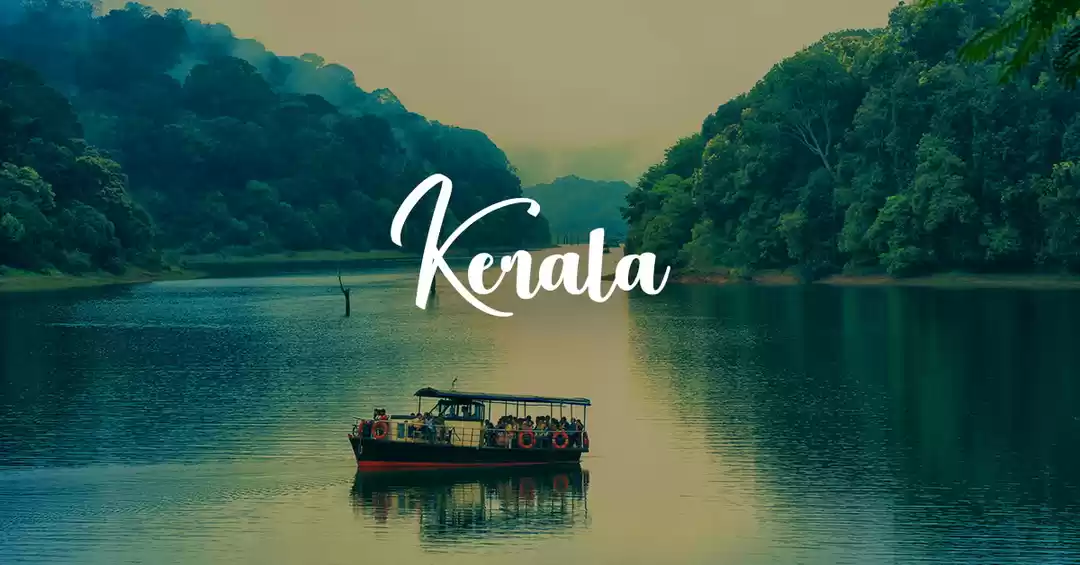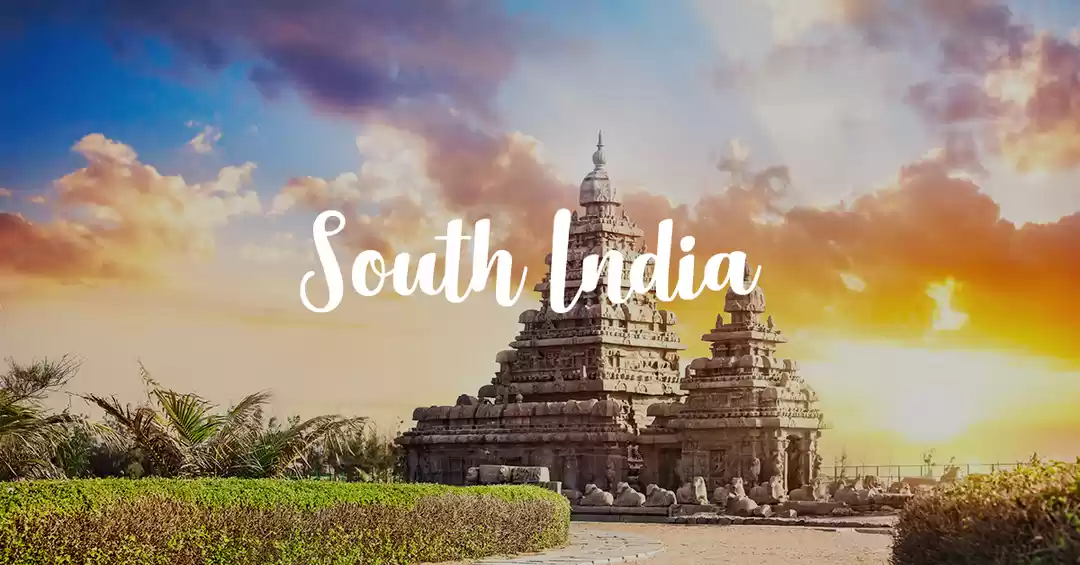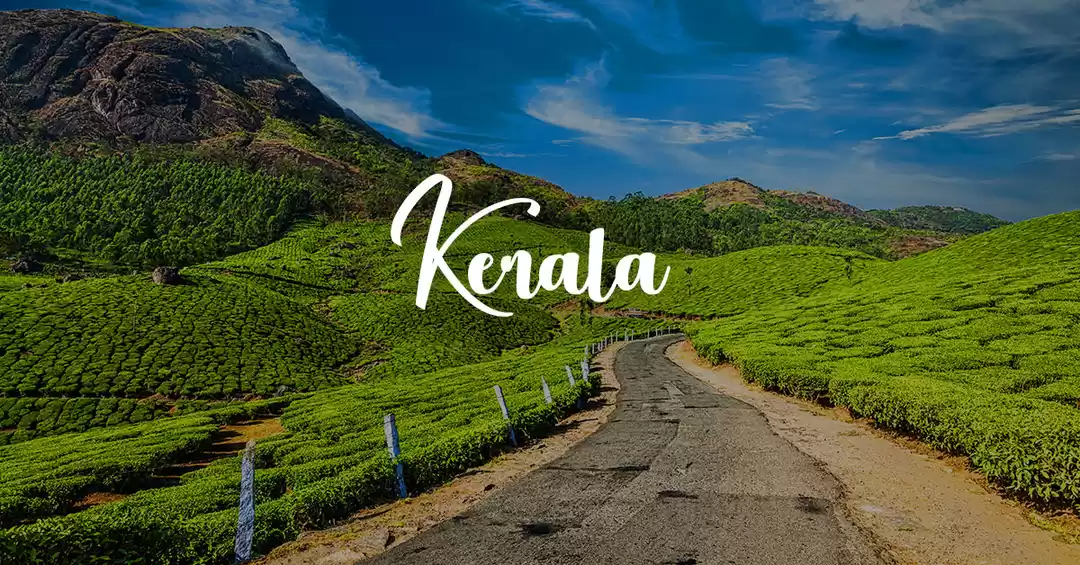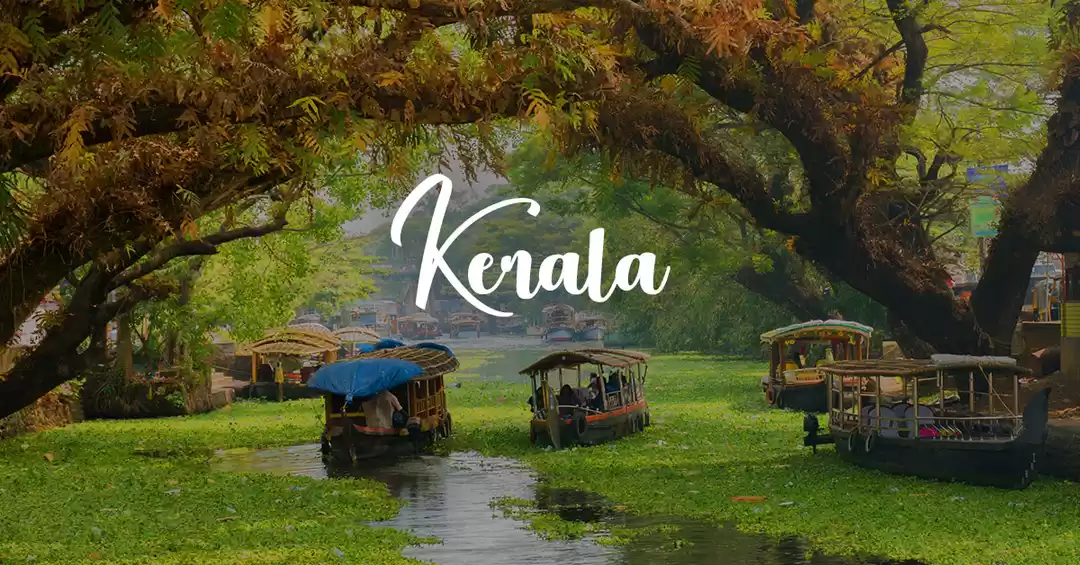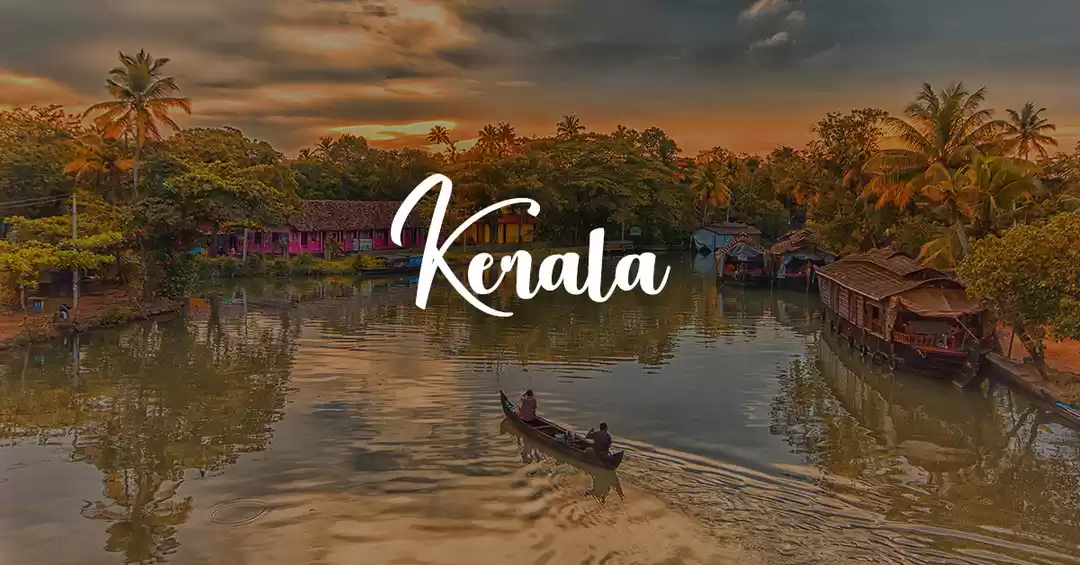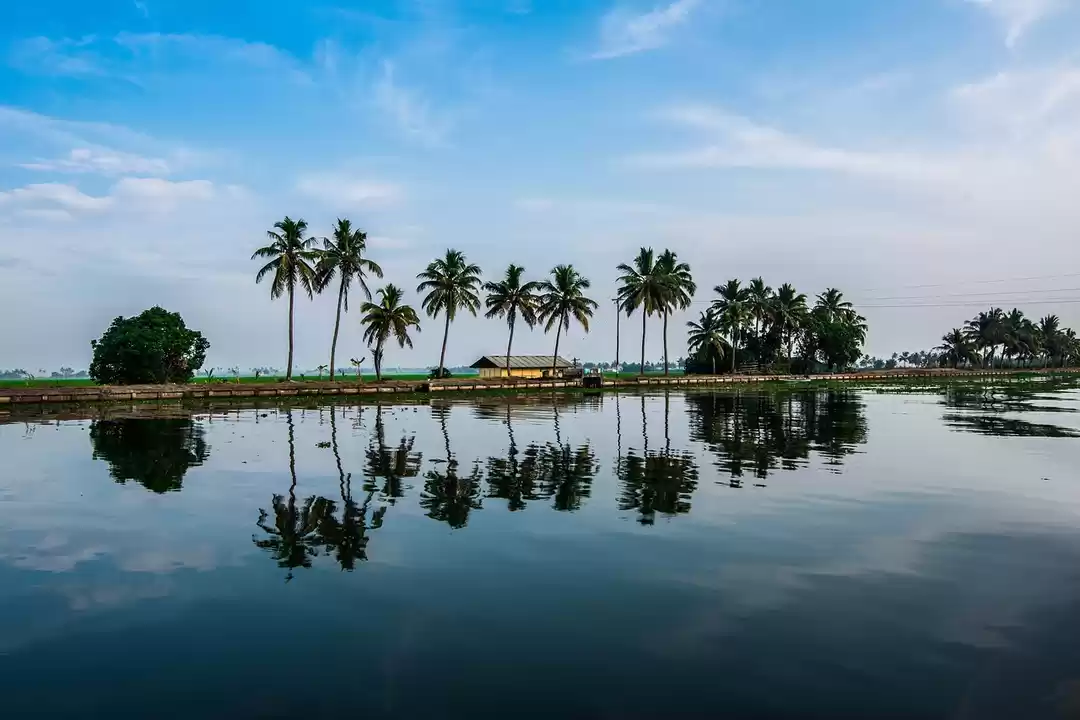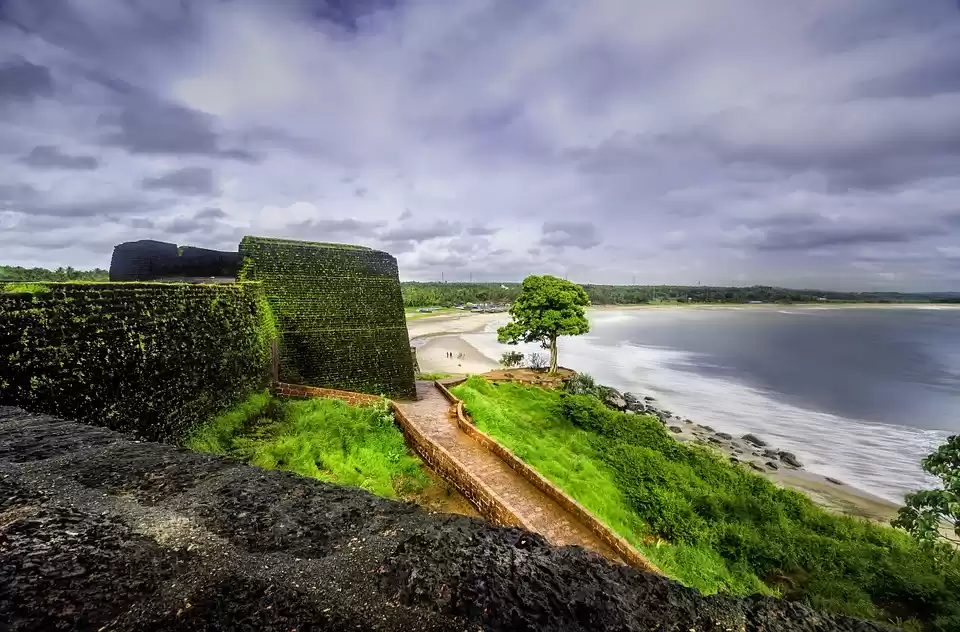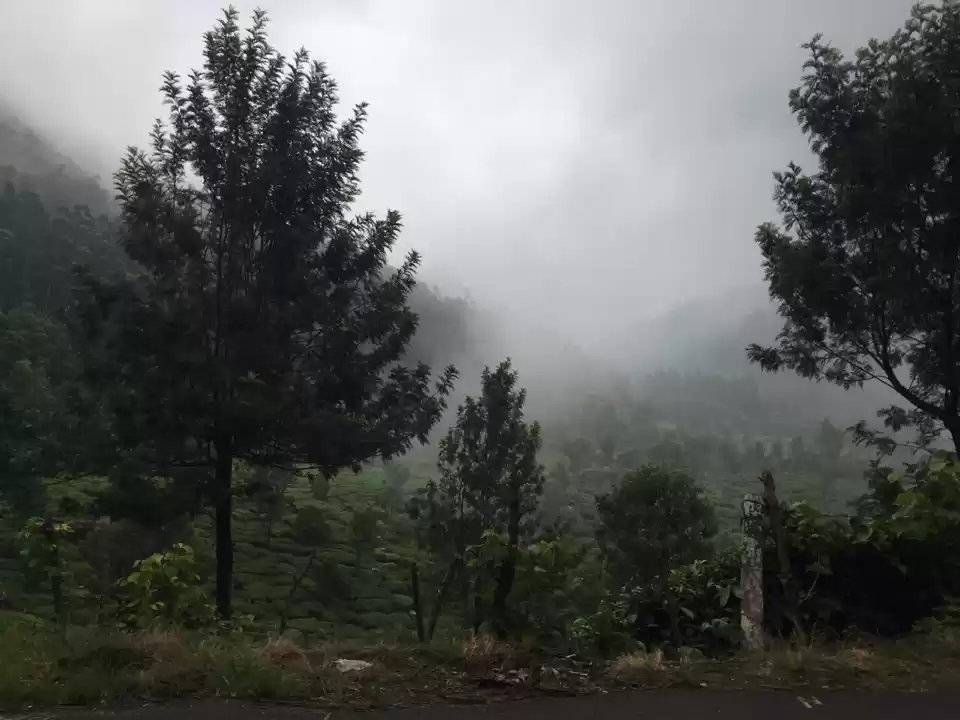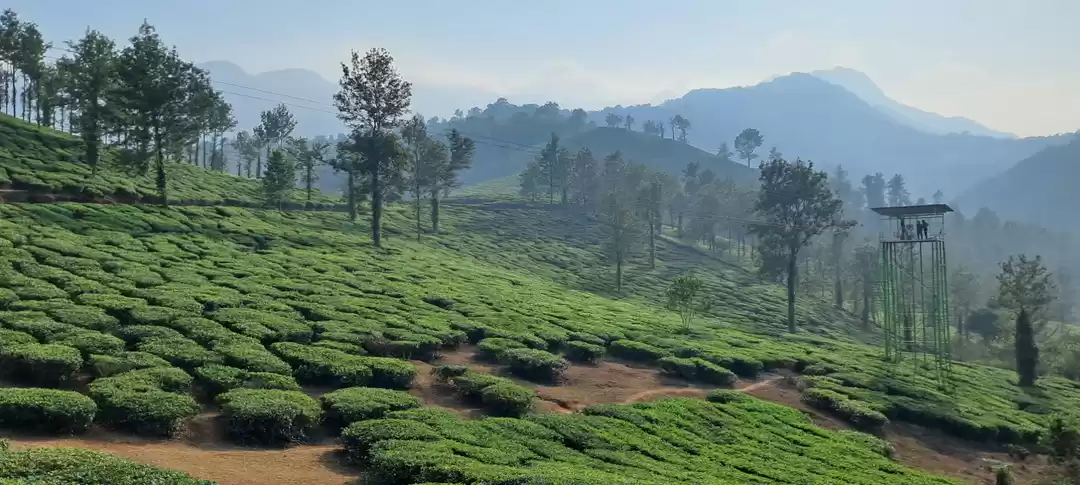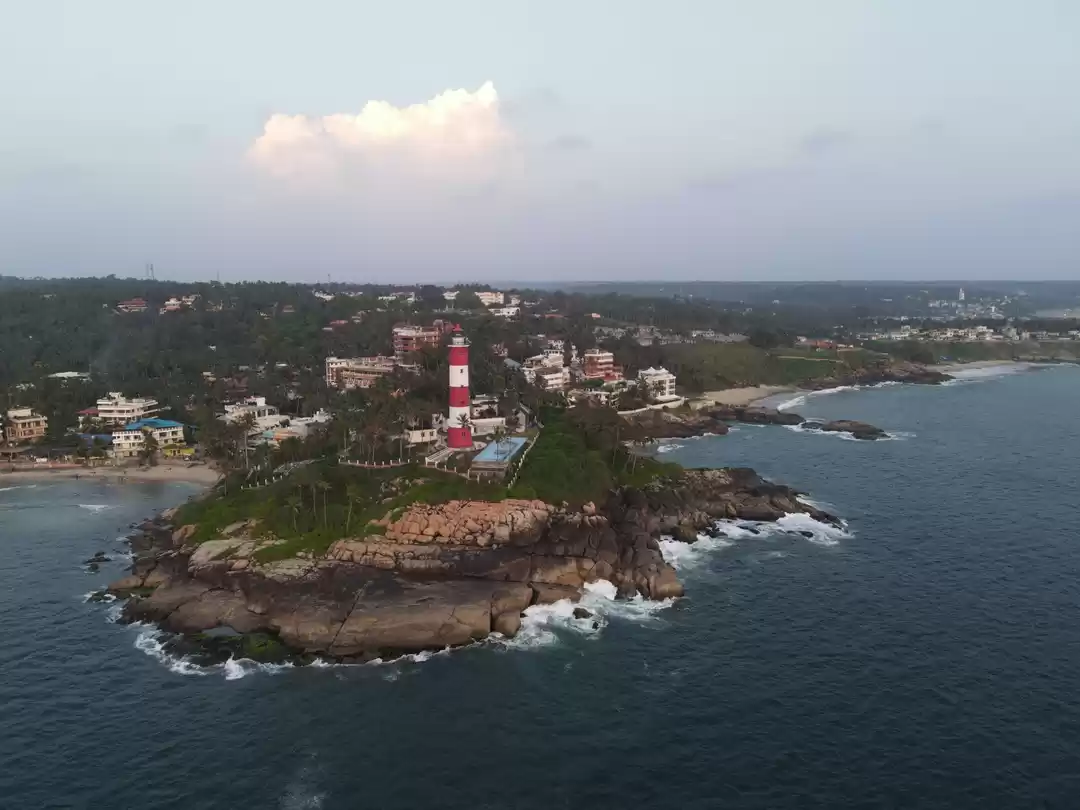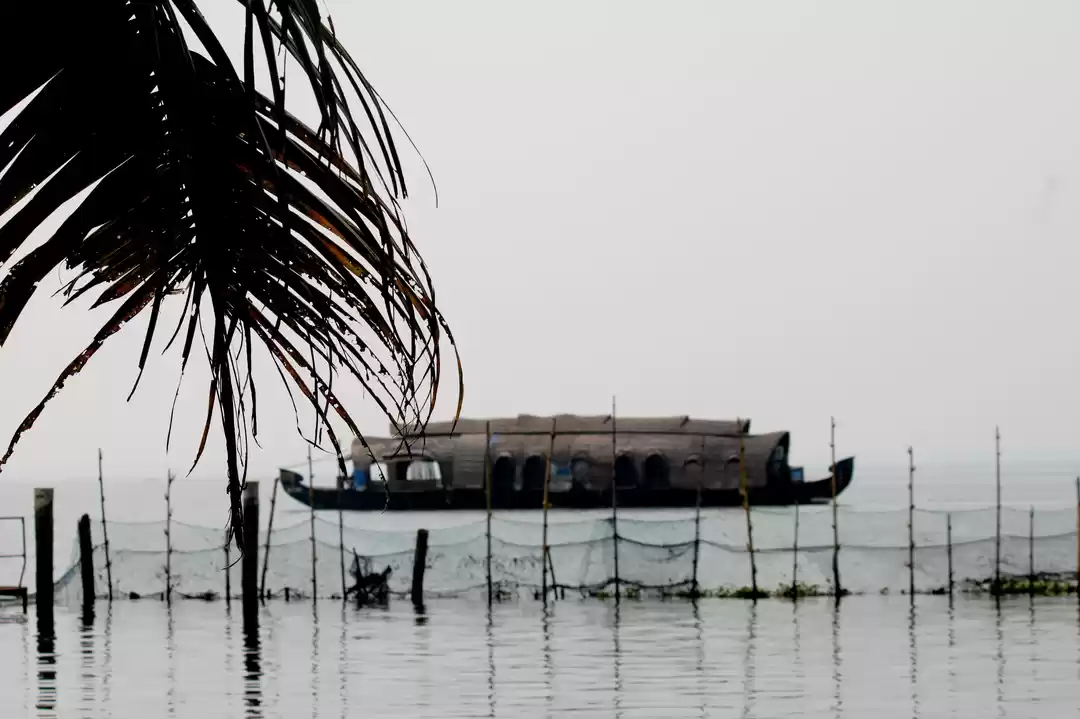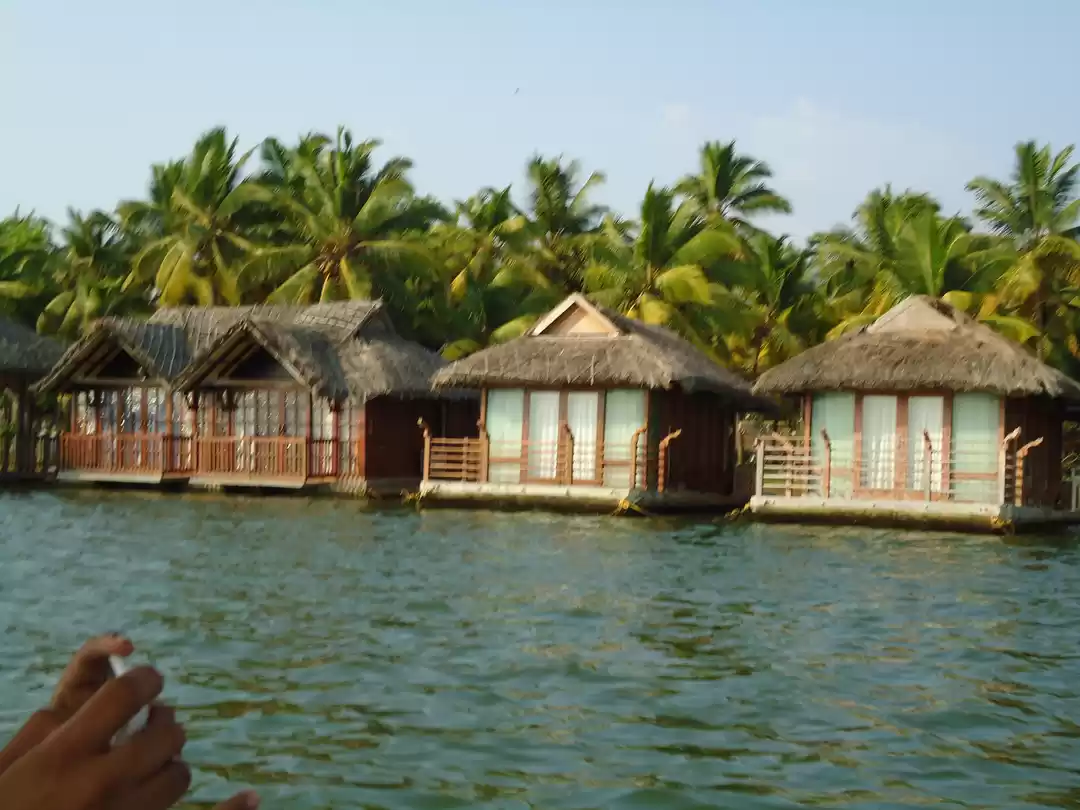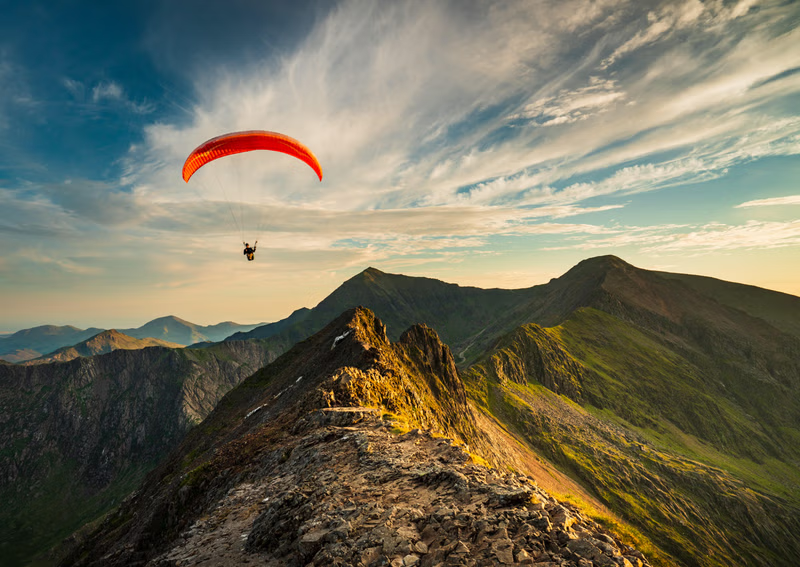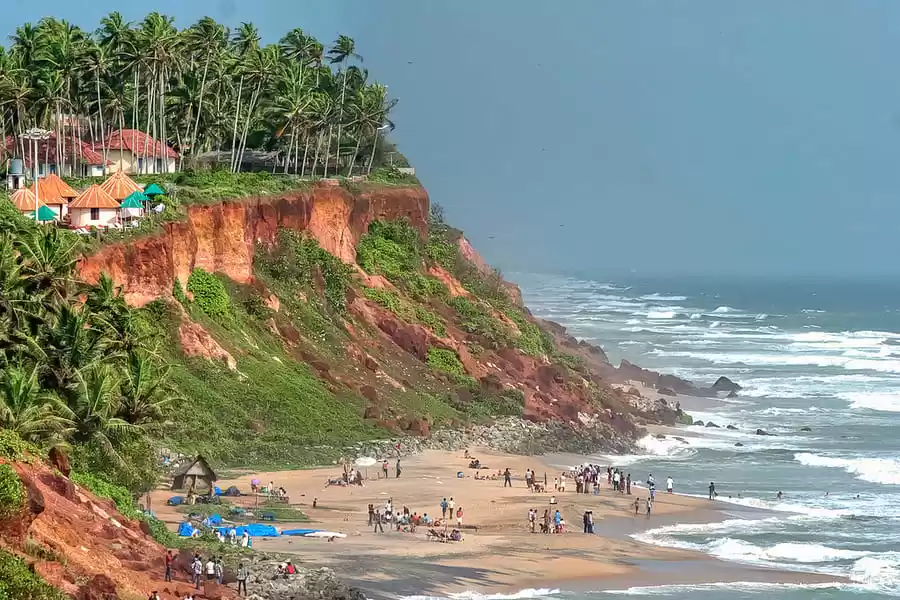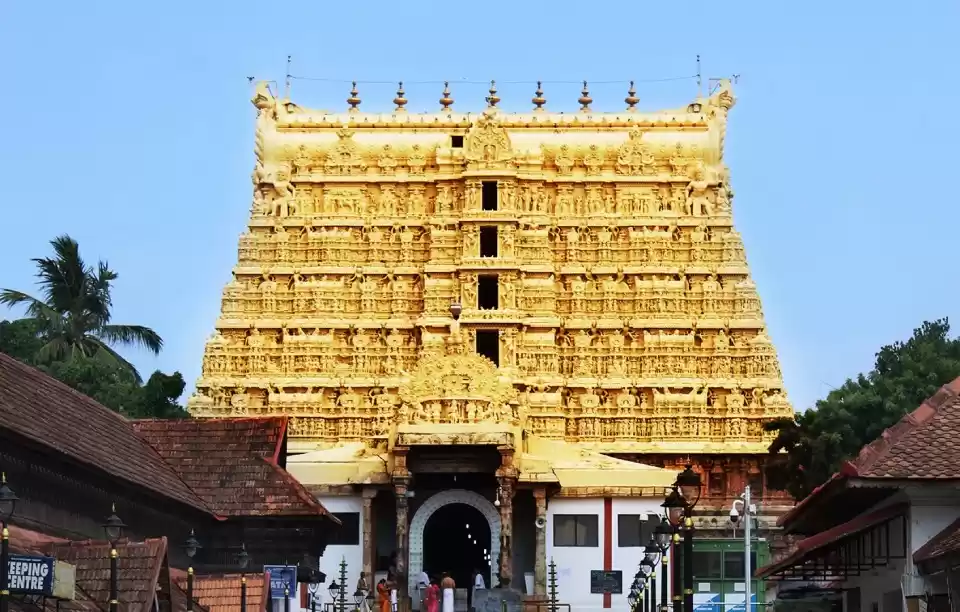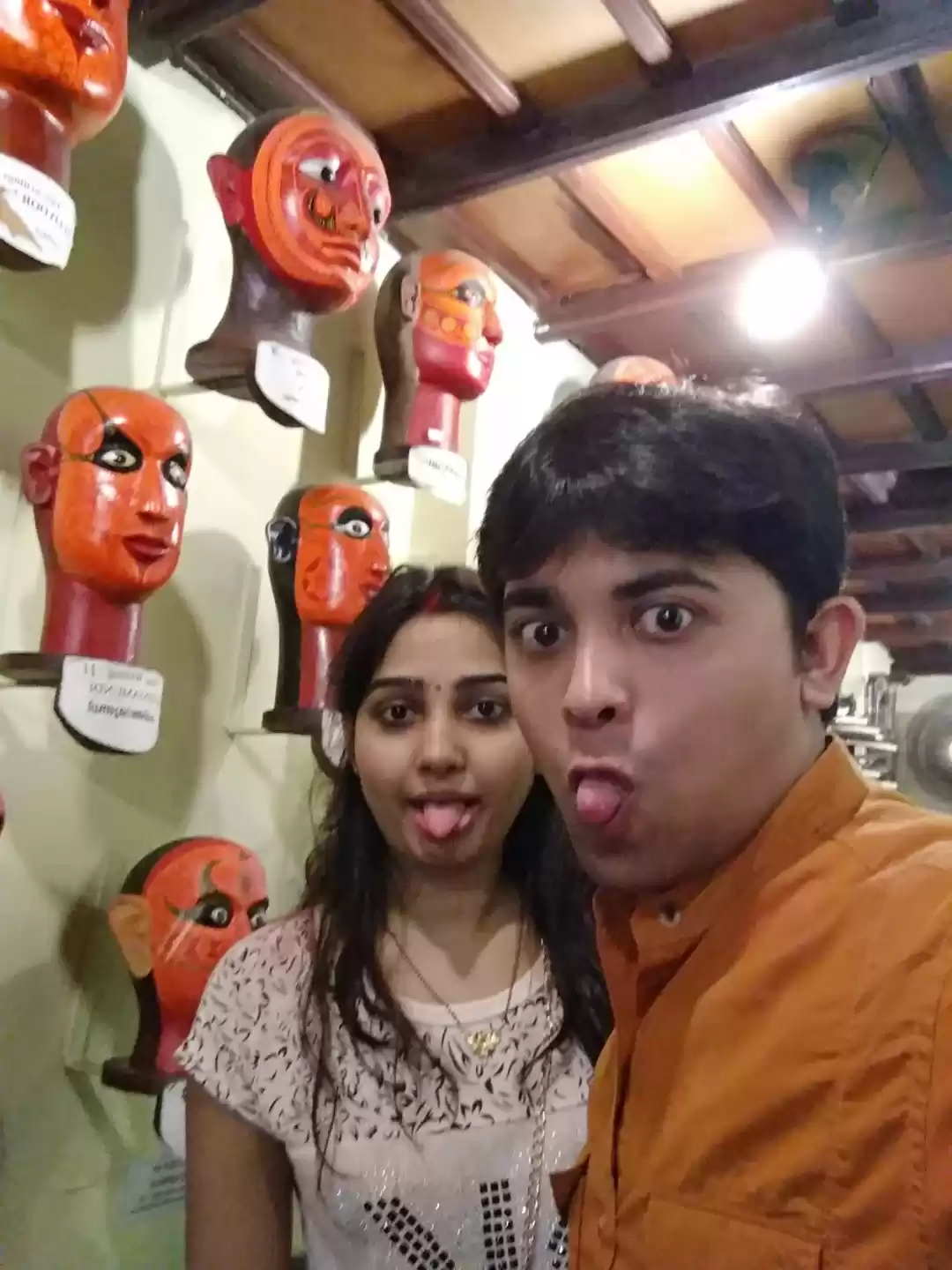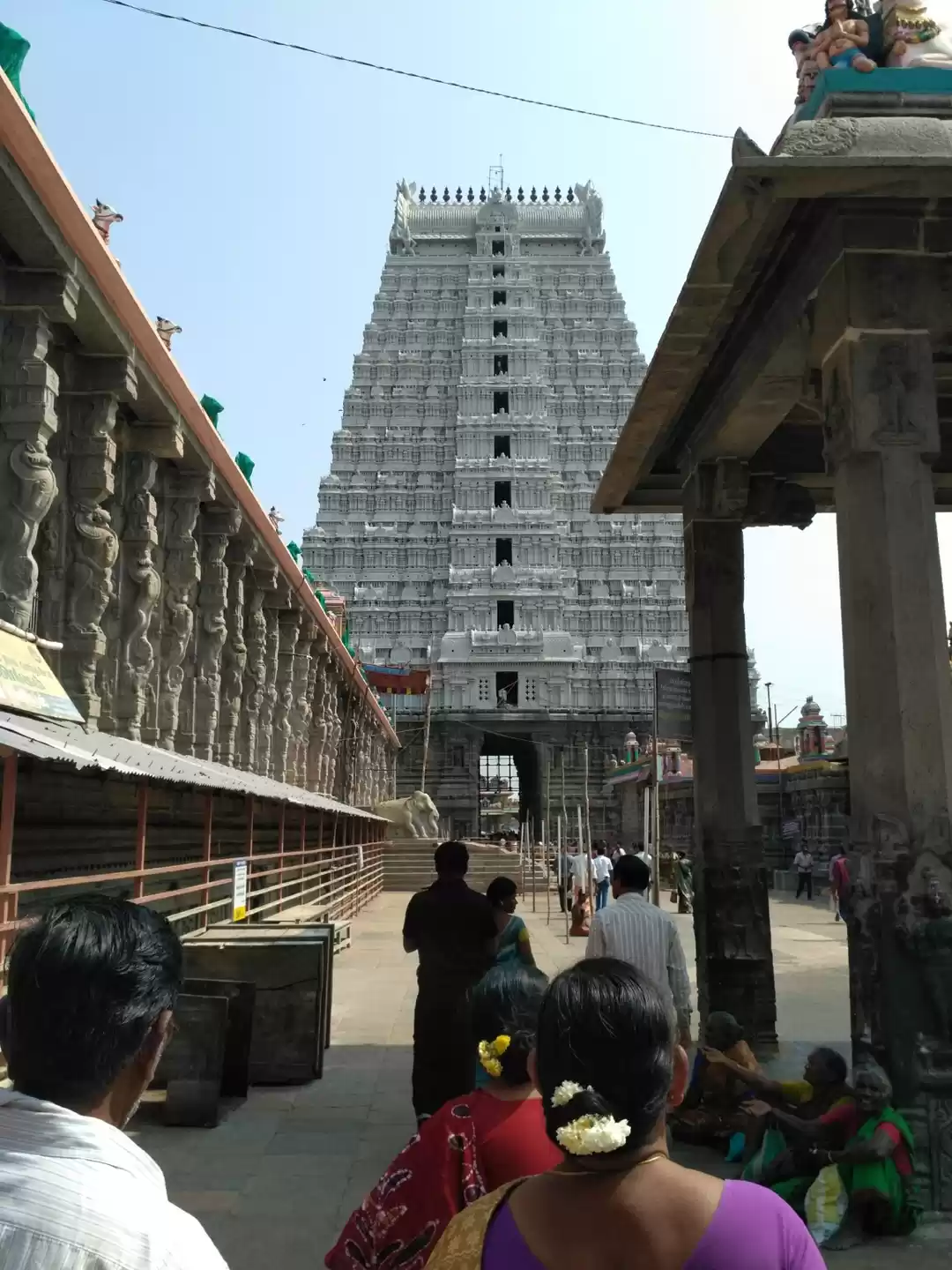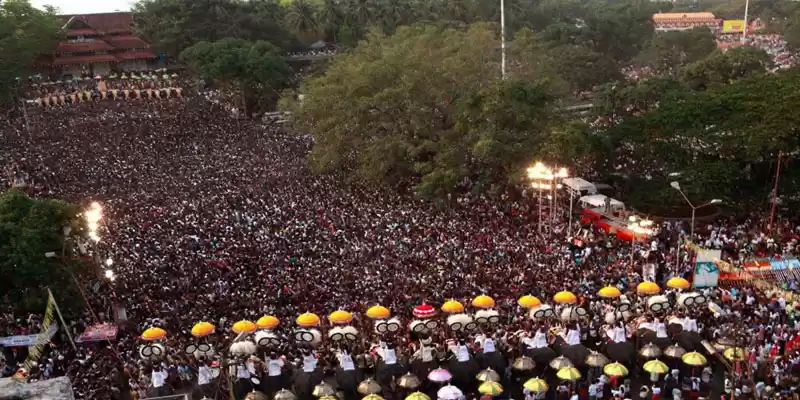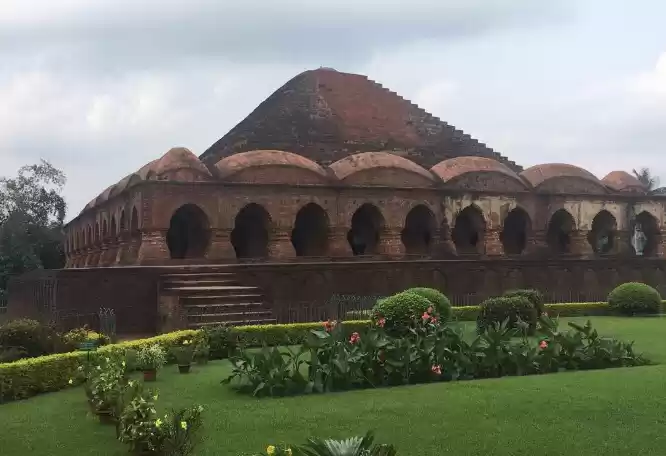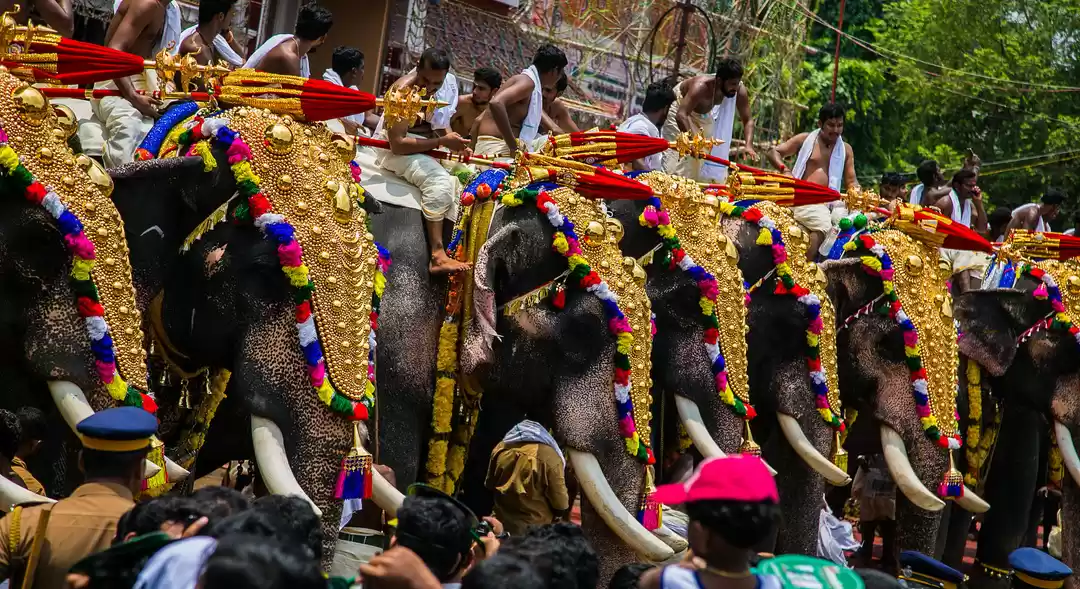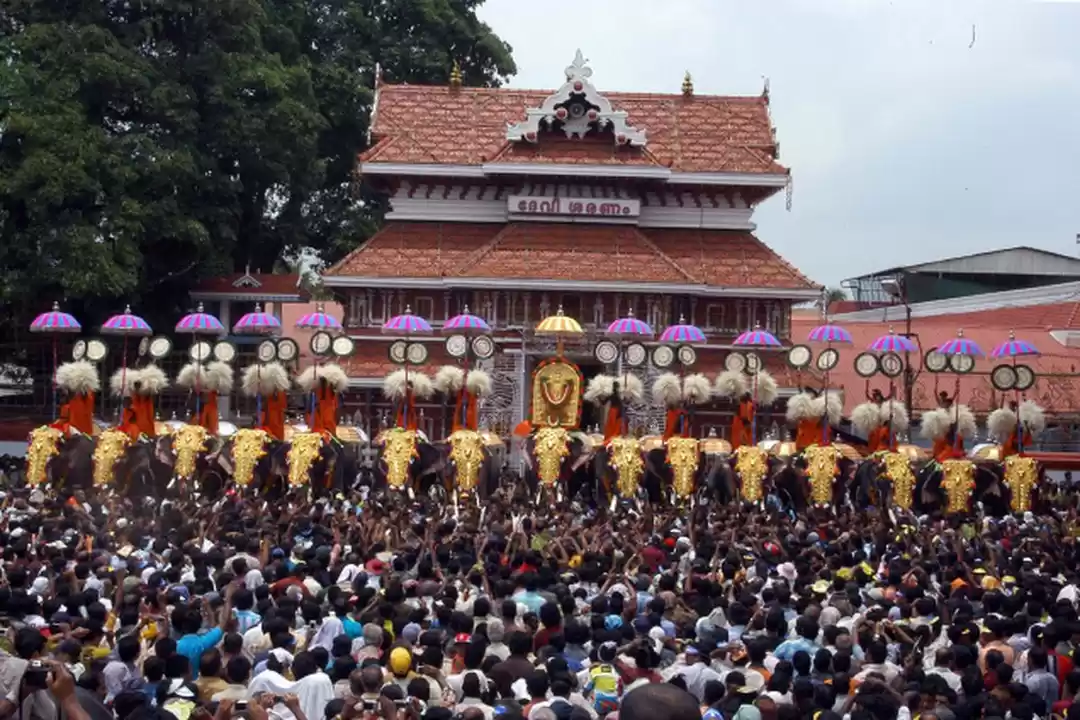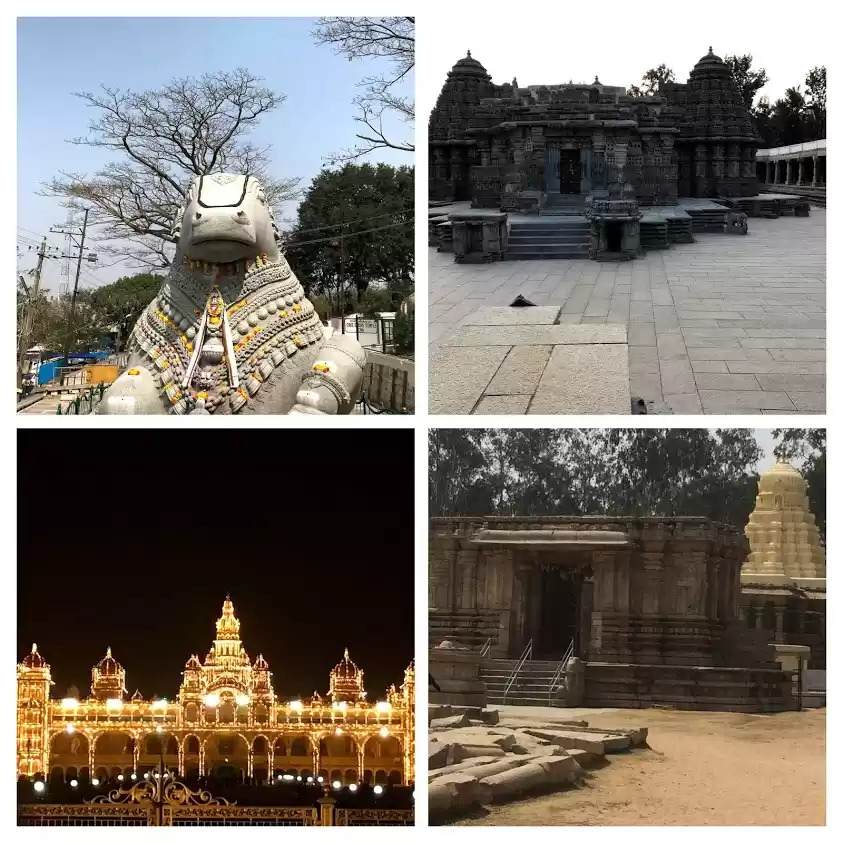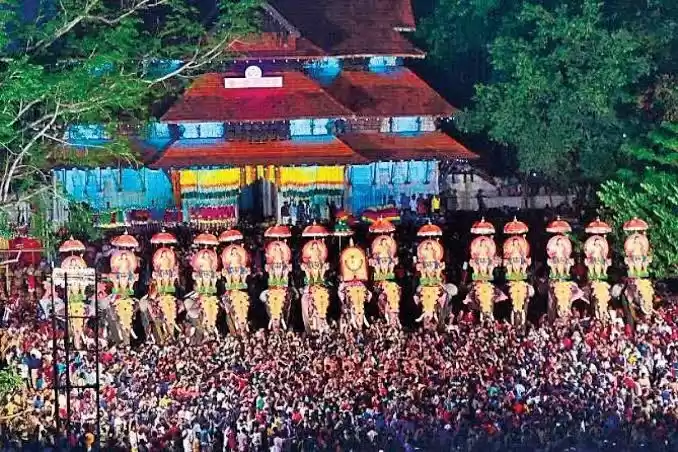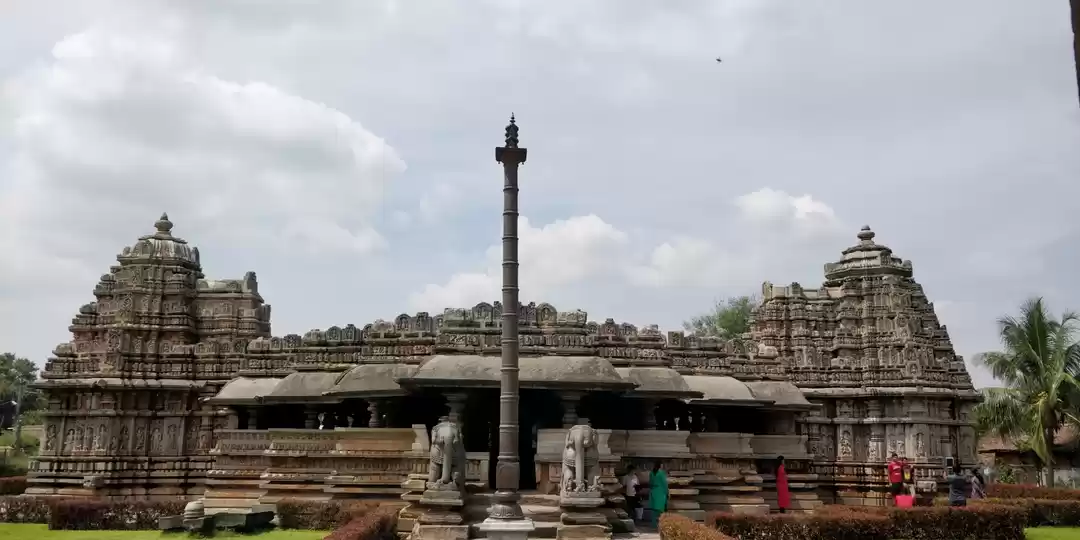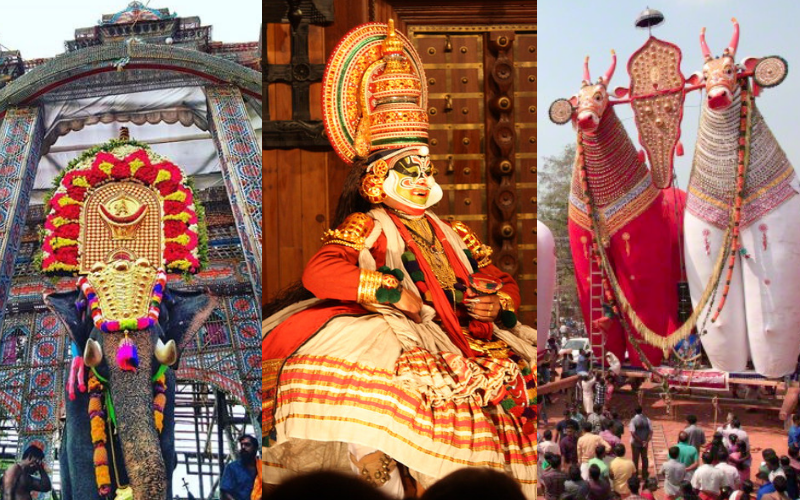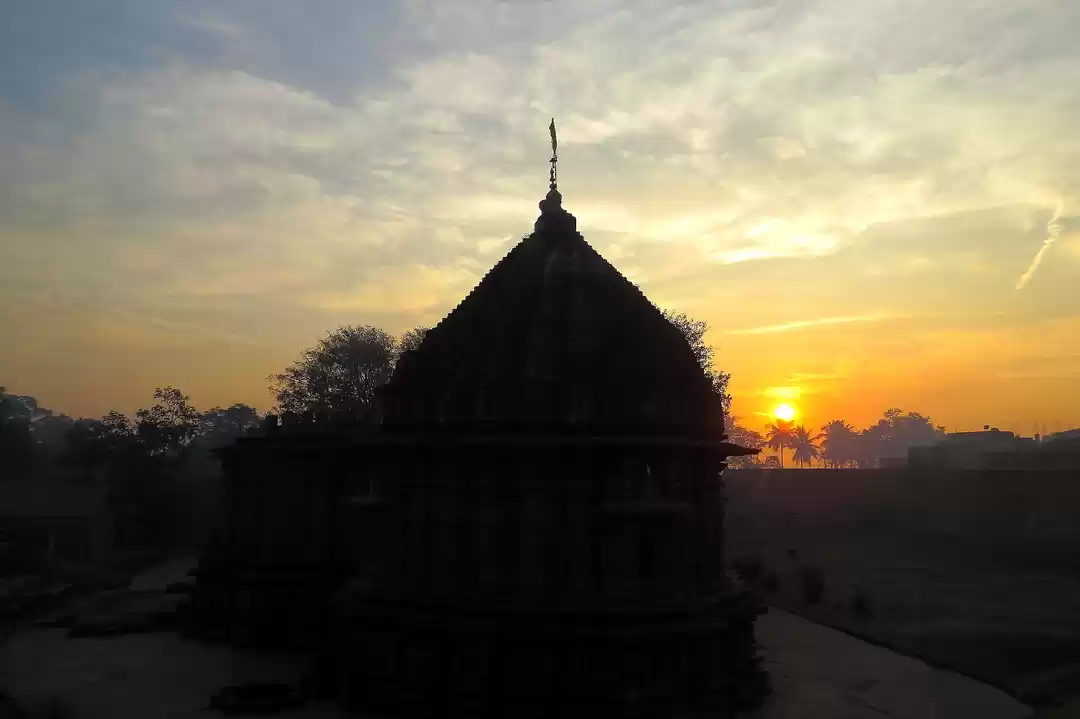


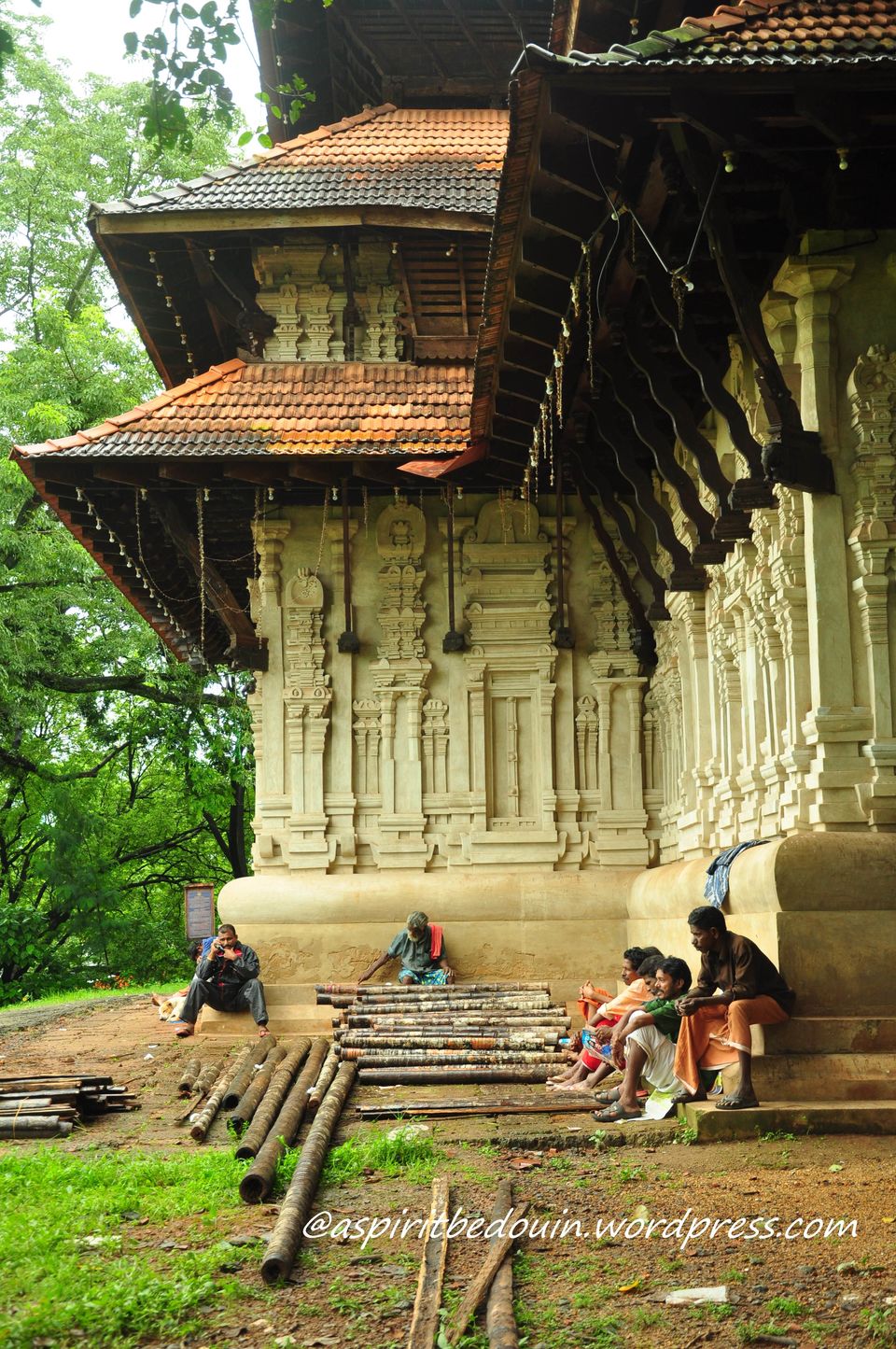






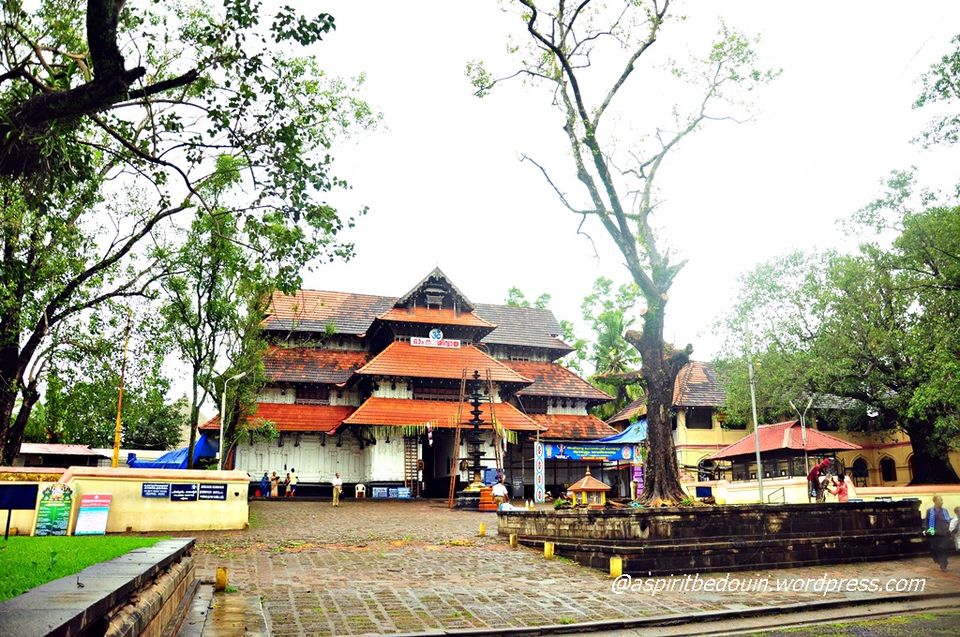






Little drops of freshness stealthily fall on my arms,raising the hair on the nape of my neck. I glance up from the camera to feel them kiss my face. My first brush with the lustrous monsoon, comes as a light teaser in this beautiful bliss of a place,Kerala.I pray for it to continue being just a tease , it seems to understand my anxiety, as it continues to drizzle ever so frugally , letting me click on again. Its been over an hour I have been going around immersing myself into the lovely expanse of greenery at the middle of this cultural haven, the Vadakumnathan Temple, Thrissur.
After having spent four months grounded at home,in a terse situation, I had picked up my sack to go on a big excuse of therapy, toKerala.This was my second visit to the state and being alone was just the thing I was looking forward to. Landing at Kerala airport, I had taken a rickshaw for Angamaly Bus stand, a distance of about 6kms from the airport.Ditching the boring main roads,the rickshaw, with its lovely brightly adorned roof,ran eagerly through the quaint lanes of Cochin.Lovely palatial houses with gracefully sloping roofs,proudly lined these little lanes.I craned my neck out of the rickshaw at every structure, successfully fighting the throbbing impulse to unpack my sack, remove my camera and start clicking. The houses in Cochin are a treat to the eyes and to an architect, they can be a little more intriguing than just that. Lavish and equally beautiful small humble houses , each with their own unique petite image grew on me as the rickshaw scurried with ease into the burrowing lanes.Paddy fields and coconut trees, incense smells and the ravishing freshness of the wet Earth..Kerala just opens its arms and ushers you in, straight into its heart, quite like our eager Mothers.
Reaching Angamaly Bus Stand, I got on the state transport bus to Thrissur, where I was headed to a small location called Viyyoor for my naturopath visit. The wetness in the air teased to turn into a downpour , as I sat at the rear end inhaling it through the openwindow.And when it did, I witnessed the phenomenon of breezy shutting of window shutters,which has me amused. Unlike Maharashtra, the bus windows in Kerala have a folding opaque shutter, held in place with a couple of simple hinged clamps.When it rains, the shutters are released instinctively by everyone together. Not following suit, I had continued the journey with my open window, getting happily drenched till i reached Thrissur.
The sign of arrival into this Cultural city is very peculiar,with the traffic thickening up and chaos rising into the little lanes.The radial layout attributes its origin to the growth of the city around the epicenter, the highly acclaimed religious structure ,Vadakumnathantemple.The temple lies at the center of the town, with a ring road that encircles it and branches out into little arrows heading radially into multiple directions.Hopping off the ring road, I took a rick to Viyyoor, a silent little place,where I was put up to meet a certain naturopath.
Winding off my work, I had started towards the center of Thrissur ,eager to have my tryst with the magnificent temple structure.Andhere I was in this late afternoon with the clouds gathered around the temple premise, threatening to pour.The temple here stands on a gorgeous 9 acres of green expanse, forming the lungs as easily as the heart of this quintessential town.Looking from across the road, the temple island , looks like an oasis of serenity , whilst the crazy traffic honks around its periphery.The Temple and its grounds lie in stark contrast, peacefully stalled , a timeless beauty, as the world around it pulsates hurriedly, jostling around into the radiallanes.With great difficulty I cross through the stream of constant motorists to the other side, and find my way into this ethereal zone. The scale of the grounds , reminds me of the oval Maidan grounds, grass stretched on endlessly,till the beautiful roofed structure rising at the center of the circular ground.I find myself standing in front of the east side gopuram of the Vadakumnathan temple. Being used to temples made of stones, granite, rocks or masonry, I am largely intrigued by the unique architecture of the Kerala temples.While temples in most parts of India are built with towering shikharas,temples in Kerala reflect a humble scale more horizontal and spread out closer to the ground with distinct sloping roofs,originating due to the climatic needs. I move towards the east Gopuram which essentially remains closed.Late afternoon at the temple premise, seemed like a siesta zone for the tired souls. A group of labourers rest sitting at the base of the gopuram wall. Large lovely canopies of moisture laden trees, with dangling roots, loom largely around the Gopuram, giving relief from the afternoon drizzle and adorning the temple with more ethereal mystery.As I look back across the ground I see the cathedral of Our lady of Lourdes church towering over the tree canopies in the distance. A lovely white crown of architecture rising into the monsoon sky , over the lush green tree canopies.The traffic around the place,looked like a movie reel in motion, happening in another time zone.Surreal.
The Vadakkumnathan temple,dedicated to Lord Shiva, is said to be more than 2000 years old and has been affirmed as a National Monument by India under Ancient Monuments and Archeaological Sites and Remains Act.Like all important temples in India , this too has multiple legends attached to its being.One says that Lord Shiva sent his Gana to find a resting place for him on Earth. Simhodhara found this place at Thrissur, where Shiva came and rested and hence the idol is said to be a Swayambhu of Lord Shiva and is said to be built by Parasurama.The temple has high fortified walls with monumental entrances called Gopurams on all four sides. These tiered Gopurams, as also the shrines within are characterized by tiled sloping roofs with large overhangs ,held in place with elaborately crafted wooden brackets, with beautifully crafted embellishments .Although no elaborate carvings are present on the walls, there are an array of motifs repeated in strong symmetry all round the Gopuram walls. Clicking a few pictures ,I walk around to the western front of the temple , which has the main entranceGopuram.The Gopurams are typically double or triple storeyed high and impart a vital platform to the drummers during thePoorams.The wood work here is of great importance, and it gives the essential verve and character to the Kerala temple silhouette. The inner skeletal framework of the temple is of wood, although the base and the structure above are of granite and laterite respectively. The roof projects out at several levels, in order to protect the inner skeletal framework from the vigorous monsoons that inundate theregion.The front of the temples bears a similar pathway leading to the Main entrance door from the ring road.A huge Banyan tree lies in middle of this path at the Shree Moolasthanam.It has high religious significance, since it lies in direct line of sight from the Lord Shiva’s idol.A towering huge brass Deepastambha with a peculiar tortoise base,adorns the entrance of the Temple.Thetemple remains closed in the afternoons from 11am to 5.30 pm and I wait patiently for the doors to open for the evening prayers.As I sit around waiting, I find locals coming to pay their respects at the closed doors of the temple. The lovely huge wooden doors of the entrance are closed but have a small square panel open allowing temple workers to move in for cleaning the premises.I peep inside feeling the watchful eyes of the watchman on me from behind. Photography is strictly prohibited within the temple premises and I had no intention to violate this rule .I move around the beautiful campus surrounding the temple, waiting for it to open.
The wet grass shines and the avenue of drenched trees rustle as I walk along the crude pathways around the temple. The Tekinkaddu grounds surrounding the temple,also house a Stable, where the temple elephants are kept. I stroll around watching a few female elephants being fed by the caretakers.An occasional Coffee vendor passes by selling his hot beverage on the cycle.On return I find a few more families awaiting for the temples doors to open. Finally at 5.30pm , we are allowed to walk into the enclosure.
From the outside of the Gopuram ,I had no clue of what to expect within the temple premises.Cameras being forbidden, there are not many images of the interior of the Vadakumnatthan temple available on the net , neither had I bothered to read up. Unprepared as I was , as the doors of the fortification open,I step into a vast space , with neatly manicured lawns ,and lovely stone pathways leading around the entire expanse to several individual structures, all with some form of sloping roofs. The first sight of the temple precincts, catch me totally unaware,the temple had a layered format, inside the Gopuram lies the outer parikrama, with carefully tended lawns and stone pathways, exceptionally well maintained, manicured and utterly clean.On the left I see the most impressive structure I could have expected, the Massive structure with drastically sloping roofs, covered with tinted copper tiles,crowned with 3 kalashams, stands in full pride.This is the Kootambalam, and this particular one at Vadakumnathan temple is believed to be an architectural marvel, with enchantingly carved wooden pillars.Thelong wooden rafters here are said to be meticulously fixed without nails. Kerala temples are traditionally a place of culmination of rituals,music,dance, culture and crafts of the region.Thekootambalams are a theater areas constructed within the temple premises,as a raised platform ,with a backstage area for the artists.A site for performances of various koothams and kadiyattams.TheKootambalam play a vital role in raising awareness and educating the visitors about the legends in Indian culture.I complete a pradakshina of this huge premises, which has multiple allied shrines of different dieties.The pradakshina in itself , acquaints one to the lovely premises teeming with nature , beautiful ancient trees spelling their age fall on the periphery of the fortifications. The serenity of the expanse is blissful for my soul.
As I go around the main temple , I see people entering the premises from the Northern and Southern Gopurams as well.Completing my pradakshina I wait at the Kootambalam in front of the entry for the main enclosure.Southern temples typically require men to remove their shirts/ vests and ladies to come dressed in saris. I stood in my capris and rain gear,nervously waiting as a lady next to me looked at me disapprovingly.I waited with bated breath as the doors opened , half expecting to be forbidden from entering.Alas,it wasnt to happen so. I entered the wooden door , of humble human proportions into the Main temple.Quite unexpectedly inside was another enclosure, parallel to the first one with a space of about 10′ between them. This houses the store rooms and other allied necessities of the temple.I walk past another entrance of human scale to step into the inner prakara, also called the nalambalam.The Main deity of Shiva lies in the inner circular sanctum called the Sreekovil with a conical roofabove.Other subsidiary deities, Shankaracharya, Rama lie enshrined in this nalambalam, along with Goddess Paravati and Ganesha. Typical to Kerala temple architecture this Cloistered Prakara has a namaskara mandapam in front of the main sanctum,multiple shrines, a temple well,a vedopadesha hall, a dinning hall and a kitchen in the southeast corner.
Overwhelmed by the unique architecture of the temple,I move around spellbound watching the amazing wooden craftsmanship gone into its making. The temples are made on a granite made with a laterite superstructure and covered with highly engineered wooden framework,which is shielded with sloping roofs pitched at 35 -45 degrees and extending with deep end gables to adequately protect the woodwork from the heavy monsoons of the region.Theframeworks at the gable ends are adorned with cutely fashioned animal heads or figurines imparting the mystic beauty to thestructure.Here the wooden adornments are occasionally covered with molded metal, adding more durability to the forms.
The walls of the main sanctum are covered with mud and lime mortar and have colorful paintings depicting the stories of the Mahabharata,I wait my turn to seek blessings from Lord Shiva.As i peep inside the sanctum,I am amazed to see no deity, no shivlingam but a high 12′-13’high mound adorned with several golden embellishments and serpents.The sanctum itself is lit up with multiple ghee diyas and lovely flowers lend their beautiful scents to the space. The vision was a blessing.As learnt the Shivalingam here is immersed within the mound of ghee offerings that have solidified over the decades.The ghee surprisingly doesn’t melt inspite of the heat of lamps lit around nor does it impart any foul smell. Intrigued, I go and buy a few ghee moulds to do my bit of the offering to the Lord. The rear side of the Shiva Sanctum houses the Goddess Paravati with its own separate eastern doorway. The temple has a particular order to be followed to offer ones prayers.After the ritualistic pradakshina in the outer prakara, One first worships Lord Shiva, then Ganesha, Goddess Paravati &Ganesha, Lord Shankaracharya, Lord Rama and completing with Lord Ganesha and Lord Shiva again. This peculiar order of worship, which I hardly witnessed barring a couple of old ladies, completes one pradakshina. After spending 2 hours within the temple in the evening ,I walk out and wait around for it to darken to see the temple lamps lightup.Multi tiered frames for oil lamps are another distinctive feature of the temples in Kerala. Lakshadeepam is a spectacular celebration of traditional lighting where tiers of small oil lamps lining the outer walls of the inner prakaram are lit.Unfortunately I had missed the festive season in April when the sprawling temples grounds are a site for the annual Thrissur Pooram . Pooram is a huge celebration,that involves a massive procession with participation from many huge temples of Kerala.A two hour long Chendavadyam, playing of five principle traditional instruments in unison is the highlight of the Pooram.Elaborately decorated temple elephants are the attraction of the event which is a photographers delight.TheVadakunatham temple has two more temples in its vicinity, the Thiruvambady temple which houses Lord Krishna and the Paramekkavu temple which houses Goddess Bhagvathy.These two temples are said to be the rival temples in the Thrissur Pooram.
As the evening settled and the monsoon skies around the temple grew darker,the temple with its yellow lights stood aglow against the purple skies.The temple lights accentuate the simple yet stark lines of the motifs on the stucco walls under the visually empowering sloping roofs.I suddenly start appreciating the works beyond the eaves. The lights also highlight the warmth of the wooden elements underneath the eaves end, the wooden frameworks, the rafters, the beautiful brackets and the wooden balconies at upper levels. Its all a piece of amazing craftsmanship which takes my breath away.
I take a few pictures of the main entrance and another walk around to the Eastern side to click in the night. As I walk back to the spot , it strikes me how the temple backyard perched on slight elevated mound served as a fabulous resting spot for the locals around. People gathered and lazed around here, stealing slice off from their busy routines and spending it in complete stillness, watching the busy street below . A much needed respite from the clamoring in the daily life.All one has to do is cross over to the other side of the ring road encircling the temple and experience the silence therein.Bliss.
This trip was originally published on aspiritbedouin.







